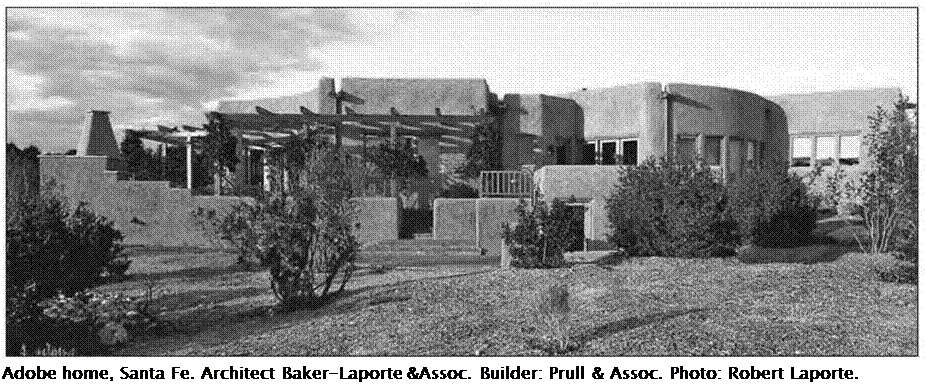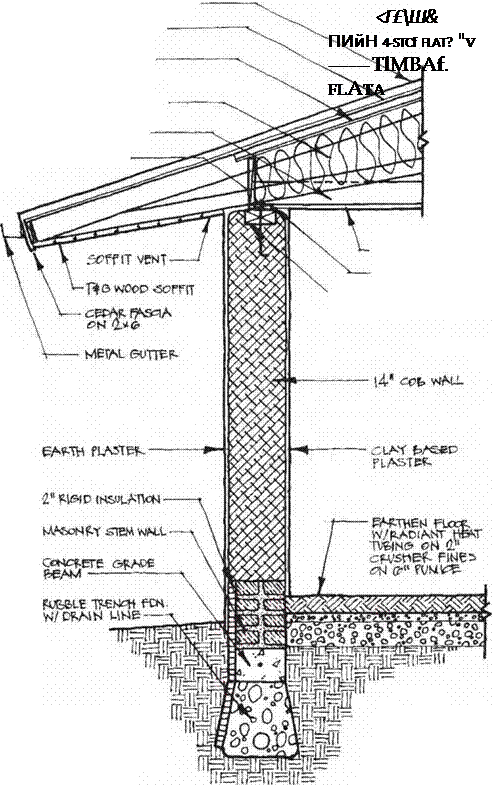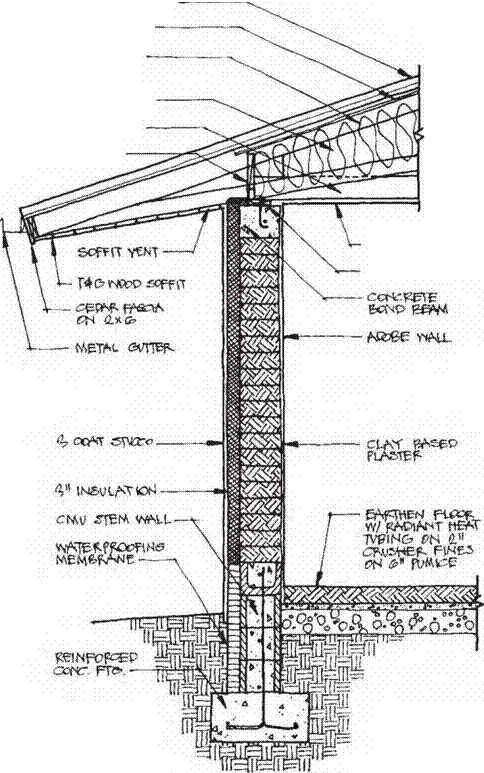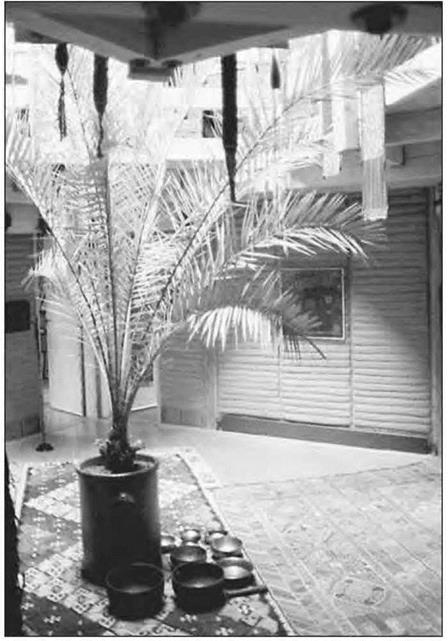Methods of Earth Construction
Earth is widely available at little or no cost. It is nonflammable, is infinitely recyclable, is
condensing. Even if water does condense, there is always an exit pathway for it. Natural building materials such as earth, cob, and masonry are especially well suited for this task. To create a fully functional wall based on the flow-through design, any healthy home project must take into account all the climate-specific details of its location.
a. Max von Pettenkofer. Uber den Luftwechsel in Wohngebauden. Literarisch-Artistische Anstalt der J. G. Cotta’schen Buchhandlung, 1858.
b. Erwin Raisch/’Die Luftdurchlassigkeitvon Bau – stoffen und Baukonstruktionsteilen." Gesund- heitsingenieur. Issue 30 (1928).
c. Winfried Schneider. "40 Jahre Baubiologie – Klischees, lnnovationen, Trends."l/l/o/mung und Gesundheit. V0I.120 (2006), pp. 12-14. See also baubiologie. de/site/zeitschrift/artikel/120/12 .php.
d. M. Stiicker et al.’The Cutaneous Uptake of Oxygen Contributes Significantly to the Oxygen Supply of Human Dermis and Epidermis."Journal of Physiology. Vol. 538 (2002), pp. 985-994.
e. W. Schneider and A. Schneider. Baubiologische Boustoffiehre + Bauphysik. Course Module 7 of
IBN Building Biology Correspondence Course 1998, p.67.
f. Moisture uptake of building materials within three hours while ambient air humidity increased from 40 to 80 percent. W. Schneider and A. Schneider. Baubiologische Boustoffiehre + Bauphysik. Course Module 7 of IBN Building Biology Correspondence Course 1998, p. 37.
Katharina Gustavs, BBEC, CT, is a Building Biology environmental consultant living on Vancouver Island, British Columbia, who specializes in electromagnetic field testing and healthy lifestyle programs for environmentally sensitive individuals. As a professional translator, she is also translating and researching the original Building Biology Correspondence Course from Germany for the International Institute for Bau-Biologie & Ecology in Florida. Contact her at gustavs@buildingbiol ogy. ca.

not subject to insect infestation, is a natural preservative, has excellent thermal mass storage capacity,3 has the ability to handle large amounts of water vapor diffusion and stabilize humidity without mechanical augmentation, and, unlike postindustrial manufactured building materials, has a proven record of longevity with intact examples dating back more than 7,000 years.
Earth is the predominant preindustrial building material. Earth construction, in all of its various forms, has not been codified on a national level in this country, and in spite of the fact that it is the wall-building material for more than a third of the worlds homes its use is considered by most building departments to be experimental. In Germany, simple standardized tests for measuring various structural properties of mud have been developed and codified. The work done there could pave the way for wider acceptance here if more performance-based criteria for code compliance are permitted in the future. For the most part, approval is currently at the discretion of the local building authority.
Earth block construction is used in every hot, dry subtropical climate throughout the world. Examples have been found in Turkestan dating back to 6,000 BC. The historical core of Shi – bam in Yemen, consisting of eight-story buildings, is constructed entirely of adobe. These magnificent buildings have scarcely been altered since the time of their last rebuilding in the mid-i6th century.
Earth blocks are primarily used in modern construction in three forms. Adobes are mixed wet, poured into formwork, and then sun dried. Pressed blocks are made from moist soil that is compacted by a mechanical or hand press. Green bricks are extruded in a brick-making plant and used unfired.
In the US Southwest, adobe is a traditional building material that has remained in continuous use and is the material of choice for some of the most exclusive residences being built today. It has been jokingly called the building material for “the idle rich” or “the idle poor” because stacking the heavy blocks is labor intensive.
 |
 |
Because the R-value4 of earth blocks is fairly low, walls require additional insulation to meet energy requirements in all but the warmest parts of North America. A higher R-value is usually obtained by adding foam insulation to the exterior of the building, which affects the “breathability” of the wall and creates a dubious marriage between natural and synthetic materials. Although most earth block is currently used in desert climates and for exterior wall construction, its excellent mass and
acoustic properties make it a superb product for interior mass walls in any climate where it is available or can be produced.
Adobe blocks are frequently “stabilized,” mainly to make them more water resistant and to prevent breakage during transport. The most common stabilizer is asphalt, a carcinogenic material that should be avoided in the healthy home. Unstabilized adobes can be purchased from some adobe yards and can be special-ordered. Compressed earth blocks can
|
Home of Professor Gernot Minke showing the "stranglehnTwall components. Photo: Robert Laporte. |
be made onsite with an adobe press, thereby eliminating the need to protect blocks during transportation. However, earth blocks that are not stabilized must be protected from ground water damage. This can be accomplished by holding the first course of blocks off the floor by installing a layer of concrete block first.
New Mexico has developed its own comprehensive code for load-bearing adobe construction, which has served as a model for parts of Colorado and Arizona.







Leave a reply